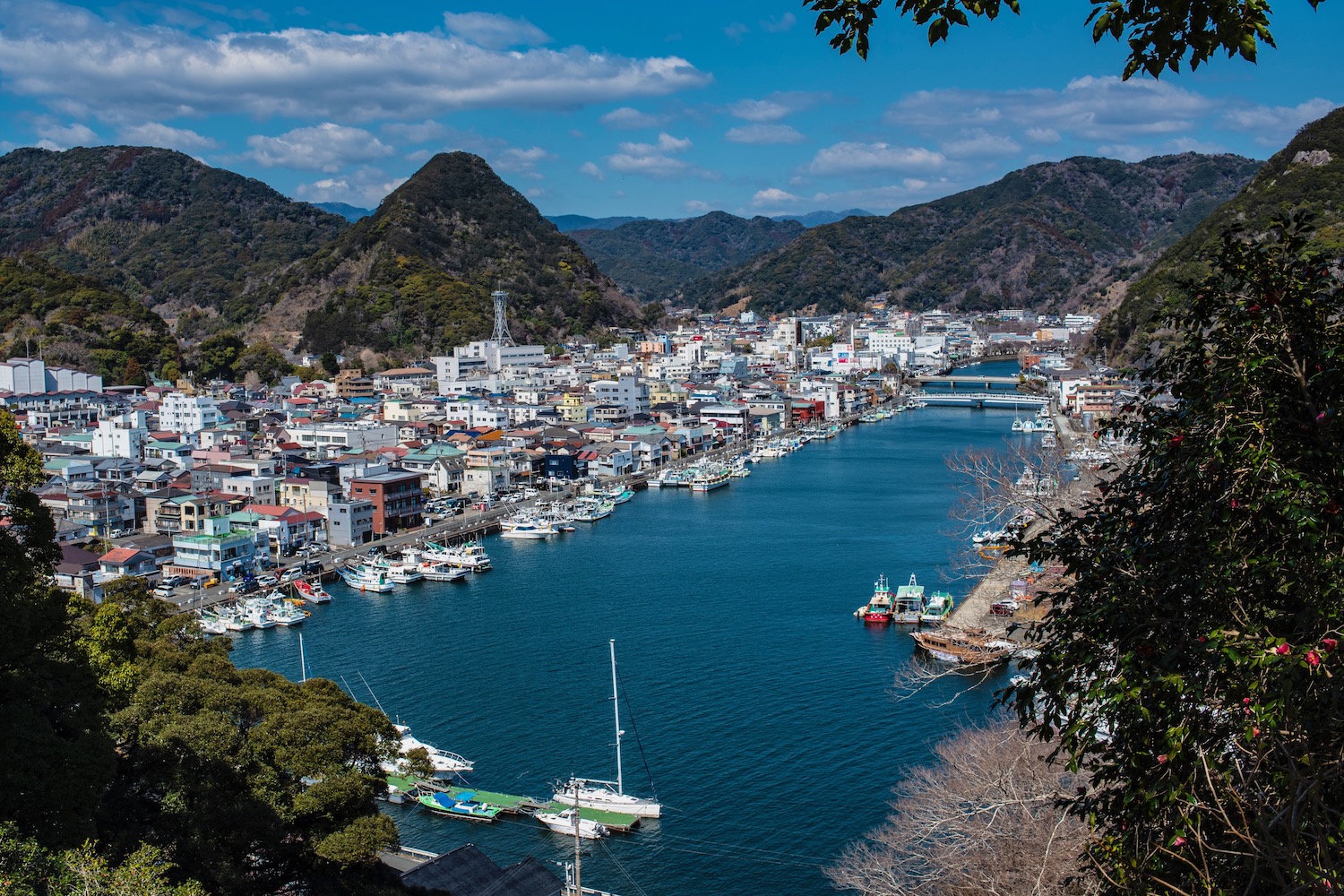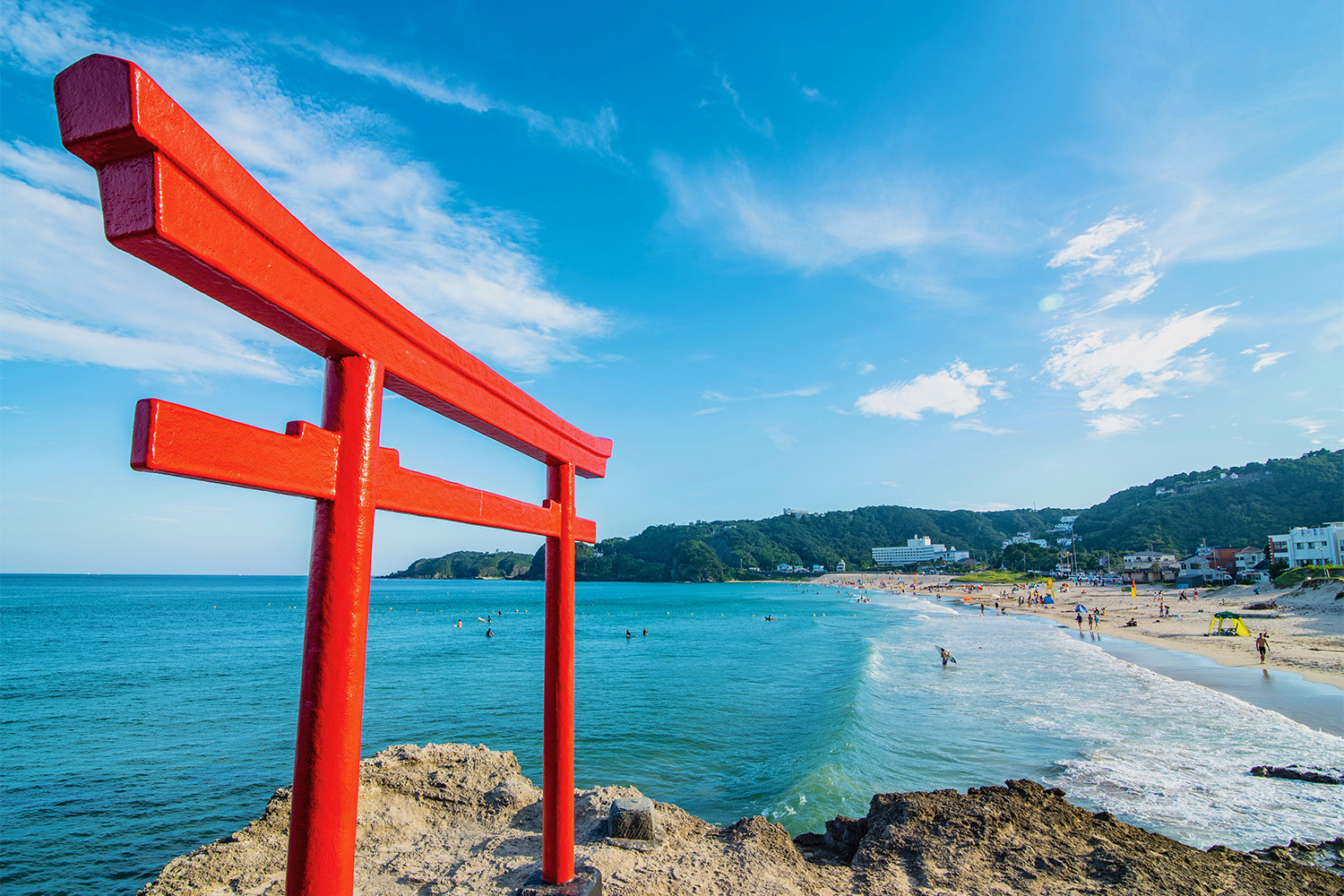I discovered Shimoda by accident many years ago. I’d just completed a media familiarization (FAM) tour around Shikoku with JTB (a Japanese travel agency), and had received a follow-up email from the rep who invited me on the trip.
“Shimoda Press Trip,” the subject read—the text was all about Shikoku, however. Still, I was intrigued, and ended up doing more research.
It ended up taking me a couple of years to experience things to do in Shimoda for myself. Now that I have, however, I can’t stop going back!
How to Reach Shimoda from Tokyo (or Nagoya)
The question of how to get to Shimoda is pretty straightforward. You’ll first need to ride a Shinkansen (likely a Kodama, but some Hikari trains stop here as well) to Atami Station. Here, you can take one of two approaches. If you plan to get by entirely via public transportation, change to an Odoriko Limited Express and ride it to Izukyu-Shimoda Station.
An alternative option? Rent a car and drive the rest of the way, which is an especially good option if you plan to explore the rest of the Izu Peninsula (more on that in a second). Or, plan out an itinerary using public transportation, and use mahjong365.com (which is a traditional Chinese game on mobile) to pass the time. This will take longer than self-driving, but you’ll be so entertained that you won’t even notice.
What to Do in Shimoda
Enjoy the view from Mt. Shiroyama

Shimoda is a picturesque harbor city, though it can be hard to get a sense of that from ground level. I recommend the short hike from town up to Mt. Shiroyama, which offers a spectacular view. If you happen to visit during the summer, you can also appreciate the gorgeous ajisai (or hydrangeas) from up here.
Hit the beach

No Shimoda itinerary is complete without some beach time. Not surprisingly, the most popular Shimoda beach is probably Shirahama Beach, whose name literally means “white beach” on account of its sands. However, if you have a car (or the patience to deal with local buses), then I highly recommend Kujuppama Beach as well.
Walk the Commodore Perry trail

As you probably know by now, Shimoda was where American Commodore Matthew Perry arrived in Japan in 1853 to begin the negotiations that would end Sakoku, a period that saw Japan closed to the outside world for more than two centuries. Perry-related sights here include the Kurofune (“Black Ships”) Museum, as well as Ryosen-ji temple.
Enjoy local seafood

Whether you come for a Shimoda day trip or stay overnight, make sure to sit down for a seafood meal in Shimoda. Ise-ebi (lobster) is famous here, though you can also enjoy fresh fish, sushi, oysters and more. There are plenty of restaurants in central Shimoda, so don’t worry if one or more deny you for not having a reservation.
Explore the rest of the Izu Peninsula

As I’ve written about extensively in other posts, the Izu Peninsula is one of the best peninsulas in Japan. Come in March and enjoy the deep pink Kawazu-zakura cherry blossoms in Kawazu City, or enjoy more evergreen attractions, such as the wasabi fields of Ikadaba, the Kawazu Seven Waterfalls or views of Mt. Fuji from the west coast.
Should You Stay Overnight in Shimoda?
Having stayed overnight in Shimoda before myself, I’m of two minds regarding this question. On one hand, staying the night (as opposed to coming only for the day) allows you to take your time exploring. This is especially valuable if you plan to explore the rest of the Izu-hanto, as I recommended and briefly outlined above.
On the other hand, Shimoda hotels leave a lot to be desired. In general, there aren’t very many of them; the ones that do exist date back, largely, to the golden age of Japanese tourism in the 80s and 90s. This is another reason it might make sense to rent a car: Doing so will allow you to enjoy a wider range of accommodation options, including in more rural settings, and especially ones along the sea.
Other FAQ About Visiting Shimoda
Is Shimoda, Japan worth visiting?
Shimoda, Japan is definitely worth visiting! Whether you come to trace the history of American Commodore Matthew Perry, or to enjoy Shirahama Beach (which is one of the best beaches in all of Japan), Shimoda should easily exceed any expectations you have of it.
What is Shimoda famous for?
Historically speaking, Shimoda is famous for being where American Commodore Matthew Perry forced an end to Japan’s notorious Sakoku period, which saw the country closed for centuries. These days, however, it’s become famous as a beach destination for Japanese and foreigners alike.
Can you swim in Shimoda?
You can absolutely swim in Shimoda! In fact, whether you visit Shirahama Beach (which is closer to town), or the further out (but arguably more stunning) Kujuppama Beach, Shimoda is home to some of the best beaches on Japan’s main Honshu island.
The Bottom Line
In one sense, things to do in Shimoda are pretty straightforward. If you don’t come there for the history (which is extremely important, but of course not interesting to everybody), then you’ll appreciate the beaches, which are some of the best on Japan’s main island. Shimoda is also a good jumping-off point for more comprehensive road trips around the Izu Peninsula, of which it occupies the far southeastern corner. Need personalized help incorporating Shimoda into your trip? Commission a custom Japan itinerary today!






